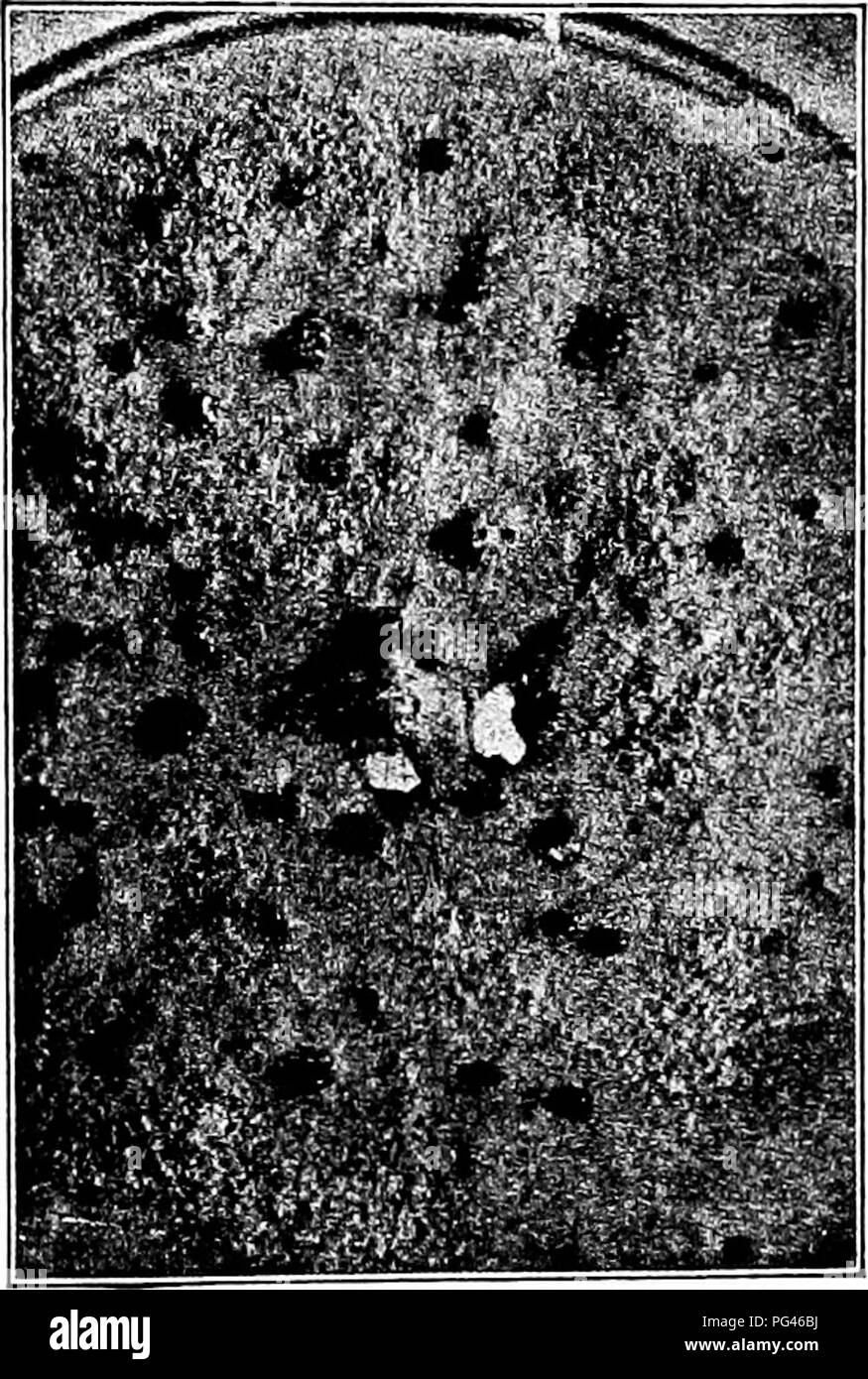. The fungi which cause plant disease . Plant diseases; Fungi. THE FUNGI WHICH CAUSE PLANT DISEASE 267 The mycelium hibernates in limb cankers and in mummified fruit.=^^ It is impossible morphologically to distinguish the conidial stages of many species of Glceosporium and CoUetotrichum grow- ing on a great variety of hosts, and much inoculation work has been done to ascertain the relationships existing between these many forms. Thus the author -"*" in Dr. Halsted's laboratory made inoculations as indicated in Fig. 367. Southworth cross inoculated a Glceosporium from grape to apple a

Image details
Contributor:
Central Historic Books / Alamy Stock PhotoImage ID:
PG46BJFile size:
7.1 MB (566 KB Compressed download)Releases:
Model - no | Property - noDo I need a release?Dimensions:
1297 x 1926 px | 22 x 32.6 cm | 8.6 x 12.8 inches | 150dpiMore information:
This image is a public domain image, which means either that copyright has expired in the image or the copyright holder has waived their copyright. Alamy charges you a fee for access to the high resolution copy of the image.
This image could have imperfections as it’s either historical or reportage.
. The fungi which cause plant disease . Plant diseases; Fungi. THE FUNGI WHICH CAUSE PLANT DISEASE 267 The mycelium hibernates in limb cankers and in mummified fruit.=^^ It is impossible morphologically to distinguish the conidial stages of many species of Glceosporium and CoUetotrichum grow- ing on a great variety of hosts, and much inoculation work has been done to ascertain the relationships existing between these many forms. Thus the author -"*" in Dr. Halsted's laboratory made inoculations as indicated in Fig. 367. Southworth cross inoculated a Glceosporium from grape to apple and from apple to grape; Stoneman from quince to apple.-" Even such cultures give little evidence of difference between these forms and it usually is impossible to distinguish between the conidial forms on either morphological or biological grounds. Some group under Glomeralla rufomaculans as its conidial forms, what were formerly known as Glceosporium fructi- genum, G. rufomaculans, G. versicolor and G. laticolor. Further studies of the ascig- erous stages have led to con- solidation rather than to seg- regation of species. Thus an ascigerous stage, a Glomer- ella, was obtained in pure culture from the following conidial forms by Shear and Wood:"^ G. rufomaculans from grape, G. fructigenimi from apple, G. sps. from cranberry, G. elasticse from Ficus (see p. 544) a Glceo- sporium from Gleditschia, one from Ginkgo, CoUetotrichum gossypii from cotton (see p. 271) and C. lindemuthianum. (See p. 547) from bean. These authors after careful study of these perithecia and cultures conclude that: "in the present state of. Fig. 196.—Plate culture of G. rufomacu- lans showing perithecia-bearing masse.s. After Spaulding and von Schrenk.. Please note that these images are extracted from scanned page images that may have been digitally enhanced for readability - coloration and appearance of these illustrations may not perfectly resemble the original work.. Stevens, Frank Linc